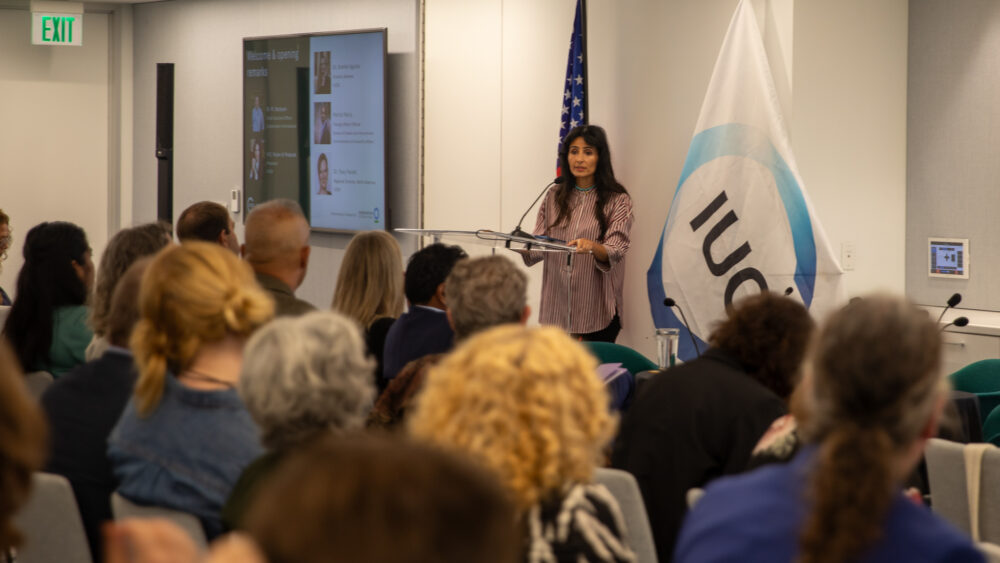We have much more to do and your continued support is needed now more than ever.
Northern Cheyenne raise concerns about the Tongue River Railroad in first public hearing
Yesterday, braving Montana’s icy roads and freezing temperatures, over 50 Northern Cheyenne tribal members from the small community of Lame Deer gathered to tell representatives of the U.S. Surface Transportation Board (STB) of their concerns about the Tongue River Railroad, a proposed coal train line that would run along the eastern border of their reservation. And boy, did the STB get an earful.
Over 90% of citizens who spoke at the meeting expressed opposition to the proposed rail line, with almost 100% of Northern Cheyenne who testified opposing the rail line and expressing grave concerns.

This proposed rail line, if authorized, would be devastating to wildlife, tribal cultural resources, local ranchers, hunting opportunities and the uniquely clean air and water enjoyed in this part of Montana.
What is a “Scoping” Process and why is the STB conducting one for the Tongue River Railroad?

A scoping hearing is when a government agency (in this case the STB) meets with members of the public to discuss the wide variety of issues related to a certain project (in this case the TRR rail line). They ask what the public believes should be addressed in the draft Environmental Impact Statement (EIS). The intent of the process is for the STB to learn about the concerns of impacted citizens and further define the issues, feasible alternatives and potential mitigation measures that may warrant in-depth analysis in the environmental review process.
What are they analyzing? The Tongue River Railroad “Alternatives”
One extremely important issue to note is that the STB must analyze various “alternatives.” Such “alternatives” include the different routes that the rail line could take but it also includes a “no-action” alternative. Let me do some bureaucratic language translation for you. I speak it fairly well. When they say the “no-action” alternative, they mean that the STB has the power and the ability to deny the Tongue River Railroad company a permit to construct and operate this rail line.
The map provided at yesterday’s scoping meeting showed the “alternatives” and yet, the STB did not have a map that showed no rail line. The STB seemed reluctant to discuss the “no-action” alternative in their presentation or expressly tell the audience that this was even a possibility. It seemed as if the agency’s representatives thought the “no-action” alternative was not even a possibility.
Check out the Tongue River Railroad “Alternatives” Map here.
At 7:20 p.m., after a one-hour open house and a 15 minute presentation by the STB contractors, the STB informed the crowd that each person had 5 minutes to speak.
Northern Cheyenne tribal members have something to say about it

One woman, who had seen the destruction of the bison bone bed on the Crow Reservation, expressed great concern for the hundreds of cultural sites along the Tongue River and Otter Creek drainages. She asked the STB, “who is going to protect these site from destruction?” She was the first of many to raise concerns about the potential destruction of cultural and historic resources. As many stated, the Northern Cheyenne are deeply connected to this region and they want the STB to tell them how this rail line will impact the plants they use, the wildlife they harvest and the sites that are important to their tribe.
Vanessa Braided Hair, a young Northern Cheyenne woman, spoke out strongly against the proposed rail line. She was adamant that “no-good” would come from the line.
Another woman—who lives off wild game such as deer and elk—also spoke out against the rail line and asked the STB how this train would affect her ability to hunt and gather along the Tongue River. She knew that wildlife would be impacted and therefore her ability to make a living would be too.
A young man, William Wilson, also known as Possum, stood up and told the STB that his people “fought and died for this land” and he is not willing to see it destroyed.
Local rancher, Clint McRae, told the STB that one of the alternatives went directly through ranches whose owners have never been notified that it was even a possibility? How can people comment on a plan if they have never been notified of the existence of this plan?
Who does the STB represent?
Person after person stood and spoke up for their people and their land. They asked about increased road traffic and the safety of their kids. They asked how this mine and railroad would affect their Class I Airshed, something the Tribe is fiercely proud of. They asked how the new railroad would affect the water quality of Tongue River.
Tribal members told the STB how it would impact their land, resources and cultural heritage, which their people fought and died to protect. They talked about the need for renewable energy projects. They talked about the impacts of climate change.
Wally McRae, rancher and cowboy poet, stood up and asked whether the Surface Transportation Board represented the people sitting in that room or a for-profit coal and railroad company?
I think the STB needs to answer that question first before it answers anything else.





















